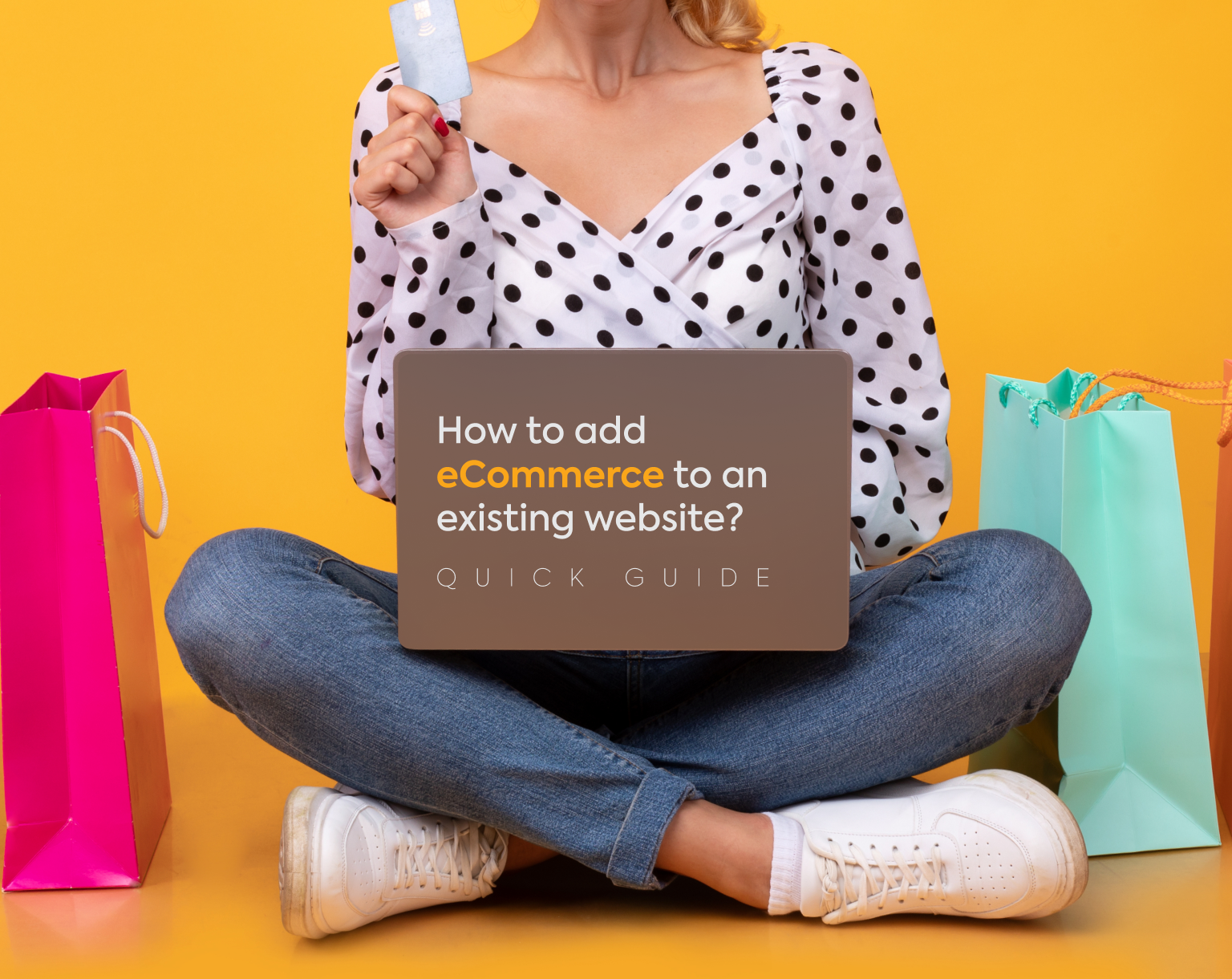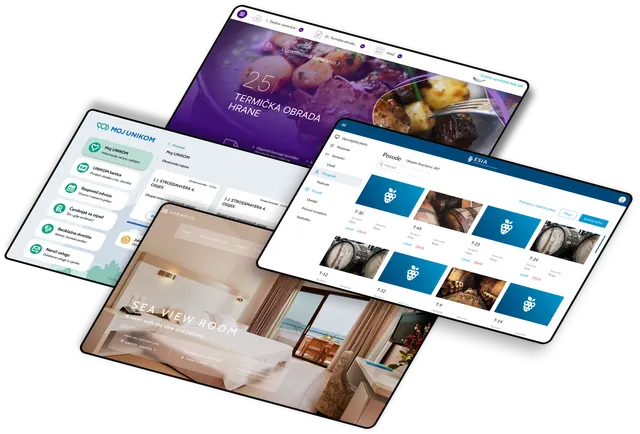
AI in Agriculture: The Most Impressive Use Cases and Benefits Yet
Key takeawaysThe AI in agriculture market is expected to ...

Author:
Tomislav Horvat

Boost Sales & Expand Reach: Adding eCommerce to your existing site allows you to reach a wider audience, connect globally, and sell products 24/7, creating a seamless shopping experience.
Simplify Operations: Integrate payment gateways, automate processes, and use tools to streamline inventory management and reduce costs.
Choose the Right Tools: Use eCommerce plugins, add eCommerce buttons, or integrate platforms like Shopify with a Shopify button for a simple, scalable solution.
Enhance Customer Experience: Add a shopping cart, improve mobile responsiveness, and make navigation intuitive with clear product descriptions and search filters.
Leverage Promotion Strategies: Promote your eCommerce store with targeted discounts, SEO, and social media campaigns. Build visibility and drive traffic by selling on marketplaces and using ads.
Optimize for Performance: Test your site for speed, usability, and mobile compatibility to ensure a smooth user experience.
Adding eCommerce to your website opens up a world of opportunities to grow your business.
With an eCommerce website, you can connect with customers around the globe, offering your products and services without the limitations of physical storefronts.
eCommerce functionalities allow you to increase sales by reaching a larger audience and staying competitive in a growing digital marketplace.
When you add eCommerce to your website, you create a 24/7 shopping experience.
Customers can browse and buy at their convenience, whether it's early morning or late at night. This constant availability enhances their experience and helps build loyalty.
Integrating eCommerce also lets you tap into global eCommerce sales trends.
You can offer a broader range of products without worrying about physical space constraints.
Plus, the data collected from online transactions can help you understand your customers better, refine your offerings, and personalize their shopping experience.
With eCommerce functionalities, you can simplify operations by incorporating payment gateways and automated processes.
This approach reduces costs compared to opening more physical stores, allowing you to invest time and money into expanding your reach and marketing efforts.
Staying on your website also strengthens your brand identity and creates a unified shopping journey for customers.

When working with an existing website, the first step is to determine if its CMS is suitable for eCommerce.
A current website might already have some compatibility with popular platforms like WordPress or Joomla, which allows you to add eCommerce features with minimal effort.
Make sure the CMS offers scalability and security to handle future growth and protect customer data.
It’s also worth checking if developer support is available for your CMS.
This can save time and money in the long run, especially if you encounter technical challenges.
If your CMS supports plugins, eCommerce integration becomes straightforward.
Platforms like WordPress and Magento provide tools to help you integrate eCommerce functionality seamlessly.
Creating an eCommerce experience involves choosing the right plugin, configuring it to suit your needs, and enabling basic eCommerce features like product listings and payment options.
Regularly updating these plugins ensures they remain secure and compatible.
Once everything is set up, test the plugin to make sure it provides a smooth shopping experience.
To process transactions, you’ll need a reliable payment gateway.
Popular options like PayPal offer flexibility and simplicity, providing customers with multiple payment methods.
Pairing this with SSL encryption ensures a secure transaction process, protecting both you and your customers.
A payment gateway isn’t just about security; it’s also about enhancing the shopping experience.
A streamlined checkout process, complete with clear cart and payment page layouts, can make a significant difference in user satisfaction.
For those looking for more advanced eCommerce capabilities, a standalone eCommerce solution can be an ideal choice.
Platforms like BigCommerce let you manage products and services with ease while offering robust eCommerce tools for customization.
These solutions often include APIs that integrate seamlessly with your existing website.
With advanced eCommerce features, you can migrate data, align branding, and monitor performance to ensure your store runs smoothly.
Expanding your reach by selling products online through marketplaces like Amazon is another great strategy.
Platforms like these provide additional exposure while drag-and-drop website builders simplify the process of syncing your inventory across multiple sales channels.
Using marketplace-specific tools helps you optimize product listings and track sales performance.
Redirecting customers back to your main website also strengthens your brand and fosters direct relationships with buyers.
A website selling digital products or physical goods should look professional and intuitive.
To transform your online store, add products with detailed descriptions and quality images.
Incorporating eCommerce features such as search filters and mobile responsiveness ensures a user-friendly experience.
You can also integrate customer reviews and ratings to build trust.
When your website becomes a seamless extension of your eCommerce business, shoppers will feel more confident and satisfied.
After setting up your eCommerce sales system, promoting your store is key to driving traffic.
A guide on how to add marketing strategies, like SEO and email marketing, can help you stand out.
Tools like Romancart and Google Checkout can simplify promotions and payment processes, making it easier for customers to buy.
By offering targeted discounts, advertising through social media, and creating personalized email campaigns, you can attract new customers and keep existing ones engaged.
Monitoring results allows you to refine these strategies over time.

Shopify makes it easy to add eCommerce functionality to your existing website with its Shopify Buy Button.
This feature integrates seamlessly with your site and allows you to start selling products without a full platform migration.
Pricing: Shopify offers its Basic plan starting at $29 per month.
Free Trial: You can try Shopify with a free trial period to explore its features.
Implementation:
Add the Buy Button sales channel from your Shopify admin panel.
Generate the embed code for the specific product or collection you want to sell.
Paste the code into your website's HTML at the desired location.
The Shopify button to your website works well with platforms like WordPress, Squarespace, and custom sites.
Features:
The button can be customized to match the style and branding of your website.
It ensures a secure and mobile-friendly checkout experience for your customers.
You can integrate it into your site without needing to rebuild your online store entirely.
Snipcart is a flexible tool that helps you enhance your website using eCommerce development options.
It’s ideal for selling physical or custom products through an adaptable shopping cart solution.
Pricing: Snipcart charges a 2% transaction fee on each sale, in addition to payment gateway fees.
Free Trial: Unfortunately, Snipcart does not offer a free trial.
Implementation:
Integrate Snipcart by embedding JavaScript and HTML markup into your website.
It’s designed for website owners comfortable working with code integration.
Snipcart works across multiple platforms and frameworks, offering versatility.
Features:
The shopping cart can be tailored to suit the design of your website using custom tools.
It supports various types of products, including digital, physical, and subscription-based items.
Snipcart includes inventory management, discount code functionality, and integration with popular payment gateways.
Shoprocket provides one of the top solutions to add eCommerce to your website with minimal effort.
If you want to add eCommerce and manage your inventory efficiently, Shoprocket offers a straightforward and reliable option.
Price:
Starter plan: $29/month.
Business plan: $79/month.
Plus plan: $199/month.
All plans have 0% transaction fees, although standard payment gateway fees still apply.
Free trial: A 14-day free trial is available to test Shoprocket’s features.
Implementation:
Shoprocket is designed for simplicity—you only need to paste a single line of code into your website.
No advanced technical skills are required, making it a time and money-saving choice.
It integrates well with website builders and custom sites alike.
Features:
Supports over 45 payment methods, including Stripe and PayPal.
Includes tools for inventory management, shipping calculations, and tax compliance.
Provides a fully customizable and GDPR-compliant eCommerce solution.
Ecwid is a versatile way to add eCommerce to your website.
It offers scalable eCommerce capabilities to your website, whether you’re selling physical products, digital downloads, or services.
Pricing:
Free plan: Up to 5 products.
Venture plan: $19/month for up to 100 products.
Business plan: $39/month for up to 2.500 products.
Unlimited plan: $99/month with no product limit.
Annual plans come with a 25% discount.
Free trial: The free plan is available and doesn’t require a credit card.
Implementation:
You can add Ecwid to your website by embedding its widget. It works seamlessly with platforms like WordPress, Wix, Squarespace, Joomla, Blogger, and more. It’s designed to be beginner-friendly and requires no technical expertise.
Features:
Provides a mobile-responsive shopping cart for an optimized user experience.
Integrates with multiple payment gateways like PayPal and Stripe.
Includes tools for inventory tracking, automated tax calculations, and discount coupons.
You can sell across multiple sites and social platforms simultaneously.
RomanCart is a free solution for certain website owners who want to add a simple shopping cart and eCommerce functionality without rebuilding their site.
It’s a practical choice for those looking for a button to your website to enable quick transactions.
Princing:
Starter plan: £9.99/month.
Regular plan: £19.99/month.
Professional plan: £34.99/month.
Enterprise plan: £59.99/month.
Free trial: RomanCart offers a 30-day free trial for new users.
Implementation:
Integrate RomanCart into your site by copying and pasting its HTML code.
It’s compatible with various website builders and doesn’t require extensive technical skills.
Features:
Supports both physical and digital products.
Includes inventory management, automated tax calculations, and discount options.
Offers a mobile-responsive cart with customizable design elements.
Can handle multiple currencies and languages, making it suitable for global audiences.
FoxyCart stands out as a robust eCommerce store solution, offering advanced tax and shipping tools along with a sleek look and feel that integrates smoothly into any website.
Pricing:
Standard plan: $20/month.
Advanced plan: $300/month.
Enterprise plan: Custom pricing.
Discount of 15% to 25% are available with annual plans.
Free trial: A free trial is offered, although its duration isn’t specified.
Implementation:
Add FoxyCart to your website using custom code, which makes it ideal for developers comfortable with more complex integrations.
It’s compatible with a variety of frameworks and platforms.
Features:
Supports an array of product types, including physical goods, digital downloads, subscriptions, and donations.
Features a customizable shopping cart and a streamlined one-page checkout process.
Includes PCI-compliant security, unlimited bandwidth, and advanced tax and shipping calculators.

Delivering an exceptional user experience is crucial when you start selling online.
To make your eCommerce store user-friendly, ensure your website loads quickly, as slow speeds can lead to customer drop-offs.
Optimizing for mobile devices with responsive design is another must, as shoppers often use their phones to browse and buy.
A clear menu structure and intuitive layout make it easier for customers to find what they’re looking for, saving them time and money.
High-quality images and detailed product descriptions add credibility and help customers make informed decisions.
Including an easy-to-use search bar with filters further simplifies the shopping process.
Customers appreciate convenience, so offering multiple payment options and being upfront about costs—like shipping and taxes—can build trust.
Adding customer reviews and ratings to product pages can also foster confidence in your offerings.
Lastly, streamlining the checkout process with minimal steps and a guest checkout option ensures a smooth purchasing experience, reducing friction and improving satisfaction.
Effective SEO strategies are essential for increasing visibility and driving traffic to your eCommerce store.
Start by conducting keyword research to identify terms your customers are searching for, particularly on your product pages.
Optimizing meta titles, descriptions, and alt text for images helps search engines understand your content and improves its ranking.
Structured data is a valuable tool in eCommerce development, as it can enhance your products’ visibility in search results with rich snippets.
Regularly updating your site with fresh content, such as blogs, guides, and product updates, signals relevance to search engines.
Site speed and mobile usability are also important for rankings, so ensure your pages are optimized for both.
Building backlinks from reputable websites and optimizing URLs to be clear and relevant can further boost your authority.
Internal linking also helps guide visitors through your site while improving navigation and crawlability for search engines.
A reliable fulfillment plan is vital for delivering products online efficiently.
Consider different approaches, such as managing inventory in-house, partnering with third-party logistics providers, or using dropshipping for advanced eCommerce needs.
Clearly defined shipping policies, including options for expedited delivery, help set customer expectations and reduce confusion.
Leverage inventory management tools, often available as a free tool or through your eCommerce platform, to track stock levels and prevent overselling.
Automating order confirmations and shipping updates keeps customers informed and saves time.
Plan for peak seasons with scalable fulfillment strategies that can handle increased demand.
Offering straightforward return and refund options ensures a positive experience for your buyers, even if issues arise.
Monitoring carrier performance and delivery times helps maintain reliability and ensures customers receive their orders promptly.
Thorough testing is key to ensuring your eCommerce site functions smoothly.
Begin by identifying navigation or functionality issues with usability testing.
Testing across various devices and browsers guarantees a consistent experience for all users.
Check that all links, buttons, and forms work as intended, especially during the checkout process.
Simulating the entire purchase flow, from adding products to completing transactions, can help uncover potential issues.
Assess your site’s speed and performance to ensure fast loading times.
A/B testing different design elements and calls to action can help you optimize for better engagement.
Finally, use analytics tools to monitor user behavior and identify areas where visitors might be dropping off, so you can refine your site accordingly.
To attract and retain customers, promoting your online store effectively is essential.
Social platforms are excellent tools for targeting specific demographics through advertising.
Personalized email marketing campaigns with special offers or updates help nurture relationships with both new and existing customers.
Offering discounts, loyalty programs, and referral incentives can drive engagement and encourage repeat purchases.
Collaborating with influencers or bloggers in your niche can further expand your reach and boost credibility.
Google Ads and shopping campaigns are powerful ways to increase your store’s visibility.
Selling on marketplaces can broaden your audience, while content marketing, such as blogs or tutorials, helps bring in organic traffic.
Track the performance of your ads and promotional efforts using analytics.
Adjust strategies based on data insights to ensure you’re getting the best return on investment and continuously improving your marketing efforts.

Adding eCommerce to your existing website is a game-changer, but navigating the tools, strategies, and integrations can feel overwhelming. That’s where Gauss comes in.
At Gauss, we specialize in crafting custom IT solutions tailored to your business needs.
Whether you’re looking to integrate seamless payment gateways, streamline operations, or create an intuitive shopping experience for your customers, we’ve got the expertise to make it happen.
Let’s talk about how we can help you take your website to the next level.
Contact us today to start building your dream eCommerce solution.

